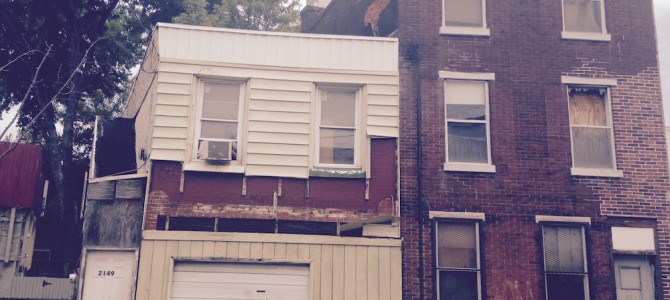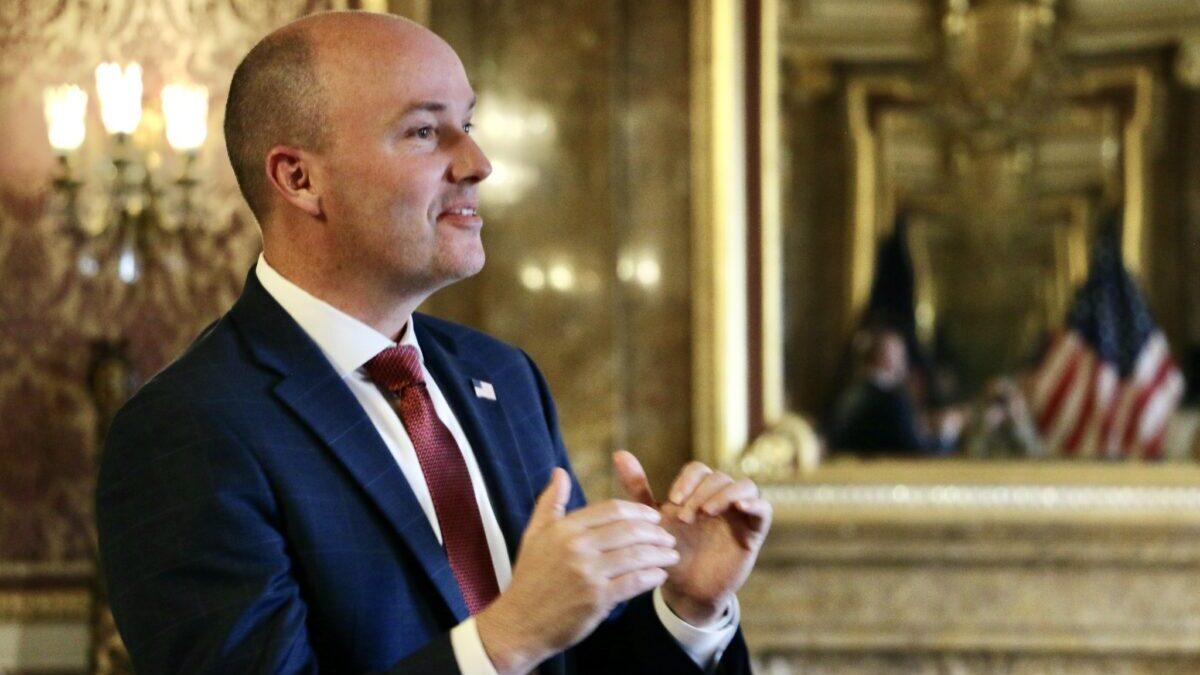
Nearly a decade ago, I was living in a warehouse apartment in a rough Philadelphia neighborhood called Fishtown. One morning my roommate got some bad news: a childhood friend from Hazleton, a former mining town about two hours north of Philly, had died from a drug overdose. But it wasn’t heroin. It was fentanyl, a powerful synthetic painkiller that’s now at the center of a growing national opioid crisis.
My roommate’s friend, a man in his early thirties, had overdosed by putting medical fentanyl patches all over his body. He was going to be buried that weekend in Hazleton, a place long ravaged by cheap heroin and opioids, and my roommate told me he was going to make the drive up from Philly for the funeral. He shook his head and said, “I’m glad I got out of that place.”
I knew something about Hazleton because I’d recently been living in nearby Wilkes-Barre, another hard-luck former coal town in northeast Pennsylvania, where I’d been a night reporter. That meant covering a lot of crime stories, and a lot of drug overdoses. The first time I heard about fentanyl was when the Wilkes-Barre police found a young man dead in a parking garage downtown in the middle of a weekday afternoon. He’d taken heroin laced with fentanyl, which a detective told me was making its way across the Rust Belt. That was in 2006.
“She Drank Herself To Death”
Since then, things have gotten worse in the Hazletons and Wilkes-Barres of America—much worse. Anecdotal evidence abounds. In Huntington, West Virginia, a city of about 50,000 in the heart of Appalachia, officials estimate one in ten residents abuse opioids. On a recent Monday, 26 people overdosed there in a matter of hours. Police suspect it was fentanyl-laced heroin, which is now commonplace in cities and towns from New England to Orange County.
Over the weekend, The Washington Post published the latest installment in a series about the rising death rate among white Americans. In McCreary County, Kentucky, the last fifteen years have brought a “75 percent increase in the mortality rate for white women between the ages of 35 and 59, one of the highest in the nation,” according to the paper. The story of death in this rural county, which is 91 percent white, is fraught with drugs, suicide, violence, and broken families:
Those deaths have all been charted by Debbie Murphy, the owner of two of the county’s three funeral homes, where she employs [Dan] Ridener as her undertaker. She maintains spreadsheets that enumerate every burial in McCreary County, and, like Ridener, knows most of the people, too.
‘She killed herself,’ she said to Ridener one morning, scanning the lists.
She pointed to another name. ‘She drank herself to death.’
She pointed to two more names. ‘Jerry and Amanda.’
‘He actually shot her,’ Ridener said. ‘And then shot and killed himself.’
‘And they were in the same casket together,’ Murphy said.
“And they’re my cousins,’ Ridener added.
‘That was drugs,’ he said of another, as Murphy nodded.
‘Drug use,’ he said of another.
It’s a disturbing snapshot of what’s happening in rural and working-class white communities across the country. Similar articles have been appearing in major news outlets all year. In May, the Wall Street Journal ran a long profile of a family in Manchester, New Hampshire, shattered by their son’s struggle with fentanyl, heroin, and crack.
Joel and Kathy Murphy, an otherwise stable middle-class couple with three grown children, watched helplessly as their son, Joseph, descended into drug addiction. At one point, Kathy and Joseph’s young wife “would sometimes patrol Manchester’s rough neighborhoods at night, watching for Joseph to emerge from one of the ‘trap houses’ where users and dealers congregate.” Like thousands of other young white men from blue-collar towns, Joseph started taking oxycodone for no reason, really. It just felt good.
Working Class Whites Are Dying
All these anecdotes are adding up to something sinister: entire communities of white working-class Americans are in crisis—and not just in rural Kentucky. The situation has gotten so bad, and is so widespread, that researchers last year were able to measure an increase in mortality rates among white middle-aged men and women, beginning in 1999.
For decades, mortality rates had been falling not just for whites but also for blacks and Hispanics. For the past 15 years, that trend has held for minority groups. But it hasn’t for lower-income whites, who are not only dying younger but increasingly report physical pain and psychological distress, as well as difficulty socializing, working, and coping with everyday life.
Other social indicators, like rates of out-of-wedlock births and male joblessness, are beginning to mirror trends found decades earlier among urban black communities. Vast swaths of prime working-age white men have dropped out of the labor market and now subsist on disability payments or welfare benefits gleaned from a girlfriend or family members.
What’s going on? Social scientists have put forward a host of unsatisfactory explanations, most of which blame these problems on economic hardships like the loss of mining or manufacturing jobs, or on policy failures like insufficient funding for welfare programs. The urge to find a solution—to do something—is understandable. So is the urge to blame somebody.
That brings us to Donald Trump. For more than a year now, the Republican presidential nominee has fired up his audiences by railing against a “rigged system” that keeps political elites in power, outsourcing jobs with “horrible and unfair trade deals” that hurt hardworking Americans in favor of powerful global interests. His message plays on middle-class fears that the deck is stacked against them, that they are powerless, that the palpable decline of their communities is someone else’s doing.
This is one of the great themes in J.D. Vance’s acclaimed new memoir, “Hillbilly Elegy.” His upbringing in Ohio and Appalachia was marked by endemic violence and drug use, which he managed to escape with the help of his grandparents and a stint in the Marines. Vance writes about his people with affection, but he’s also candid about their fatalism: “We talk about the value of hard work,” he writes, “but tell ourselves that the reason we’re not working is some perceived unfairness: Obama shut down the coal mines, or all the jobs went to the Chinese. These are the lies we tell ourselves to solve the cognitive dissonance—the broken connection between the world we see and the values we preach.”
The reality, Vance argues, is that “These problems were not created by governments or corporations or anyone else. We created them, and only we can fix them.” That doesn’t sit well with many Trump supporters, who see in President Barack Obama and Hillary Clinton the source of all their misfortunes. But it also doesn’t sit well with the liberal elite, who never encountered a social problem that couldn’t be blamed on corporate greed—or fixed by a government program.
Alec MacGillis, writing in The Atlantic, claims Vance is wrong to lay the burden for fixing things on his people. “The government and corporations have presided over the rise of new monopolies, the effect of which has been to concentrate wealth in a handful of companies and regions,” he writes, citing free trade agreements, the entry of China into the World Trade Organization, the weakening of organized labor, the government’s role in the decline of the coal industry.
MacGillis has a point. It’s true that the government has presided over the rise of new monopolies, especially during the New Deal, the justification for which was to help poor people. The irony is that MacGillis goes on to cite New Deal programs as examples of how government can fix the very problems it created through central planning, the granting of monopolies, and the drastic curtailment of economic freedom. He notes the concentration of wealth in certain cities like Washington DC, without acknowledging the New Deal’s role in making such concentration inevitable.
How To Make America Great Again
That’s not to say that there’s nothing the government can’t do. Policies that incentivize work and marriage, welfare reform that discourages dependency, and regulations that don’t impede Americans who want to start a new career are all things government could do to help at the margins.
But the knot of problems now distressing America’s white working class are primarily moral and cultural, not economic or political. There’s nothing the government can do about that. These problems began in the family—or rather, in individual families. Only families and supportive communities can properly address them and, over time, bring renewal.
Of course, no one wants to hear this because it serves no powerful constituency. The political Right and Left alike have their reasons for connecting the plight of the white working class to politics and the culture wars. Trump wants poor whites to think the government has screwed them over. Clinton wants them to think only the government can save them. Neither care all that much what happens to these people.
Nevertheless, to say that poor whites need moral renewal above all is to invite scorn from both sides. On the Left, they’ll say this is simply classist and bigoted—the same argument racist conservatives once used to explain similar problems in black America. On the Right, they’ll say it’s condescending and delusional not to see that the real problem is Obama and Hillary and the Mexicans and the Muslims.
Meanwhile, struggling towns and families that are tempted to rally behind Trump’s promise to “Make America Great Again” really want something else, smaller but infinitely more powerful: they want to make their neighborhoods and their families great again. That might not sound like much in the corridors of power, but out in America it would make all the difference.









